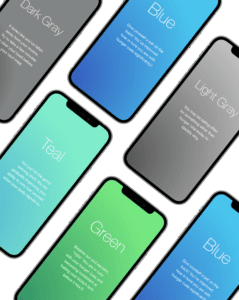Keeping Our Hearts Healthy: A Behavioral Science Perspective

By Dan Ariely and Evelyn Gosnell
What does behavioral science have to say about keeping our hearts healthy? We can think about this in two ways – literally and figuratively.
Let’s start with the literal side: our cardiovascular health. On the surface, this is simple. It’s about making healthy food choices that keep our cholesterol and blood pressure in line, and doing cardio. But you know that already. Generally, we know what to do – the question is how to motivate ourselves to do it.
Here are some tips from behavioral science:
Don’t tax your self control/ willpower
It’s misguided to think of self control as a muscle that gets stronger the more we use it. On the contrary, if we stare at a cupcake all day long, at some point we are very likely to crack. It’s much more effective to change your environment than to rely on self control: remove the cupcakes. Think about ways to change your environment to remove temptation as much as possible.
Create simple rules for yourself
I don’t eat bread on weekdays, only on weekends. This is another way to reduce the need to rely on self control. I don’t need to think and go back and forth on whether I should have that croissant. Is it Monday? It’s a no – I don’t have to think about it. Saturday? OK. For you, this might be jogging every Monday, Wednesday, and Friday.
Add more fun
Our long-term health and longevity are in theory good reasons for us to eat healthy and exercise. Unfortunately, they’re not the most compelling because they are in the future. The key is to add something positive to the moment. So choose an a physical activity that you find fun – maybe it’s rollerblading, or beating your partner in tennis, or maybe it’s swing-dancing.
Now, let’s think about heart health more figuratively. What can we do to increase our happiness? There’s a broad array of social science findings here – one of the main ones is the importance of social connection. We’ve becoming increasingly isolated and lonely, a phenomenon described by Bob Putnam’s Bowling Alone.
Find ways to spend time with others
This could be joining a rec team or it could be as simple as reaching out to a friend and going for a walk together. Or grocery shopping together. Or having lunch with your colleagues instead of at your desk.
… And do it in real life, not on social media
While social media may feel like we’re connecting with others, we know from research that spending time on social media is correlated with unhappiness. It is simply not the same as spending time with people in real life; it’s no replacement. Having trouble cutting back? Try using another tool in the behavioral toolkit, precommitment: set app limits. This can help break the mindless habit of looking at your phone at any moment of pause.
Looking to sleep better, eat a bit healthier, move more, build a practice of self-care, or just want to feel more energy each day? Let Shapa be your virtual coach. Shapa focuses your program based on YOUR lifestyle and YOUR goals so you can build healthy habits and achieve lasting results. Learn more about the Shapa difference.




